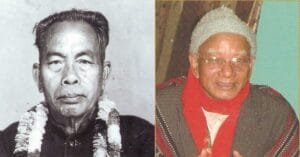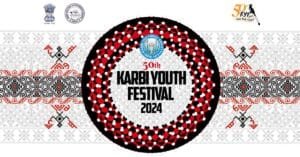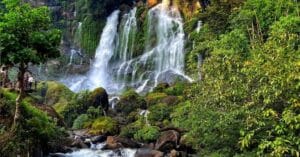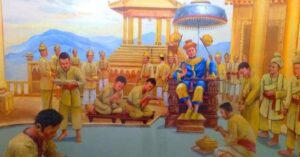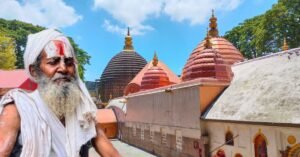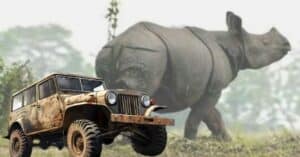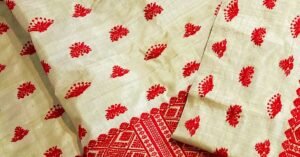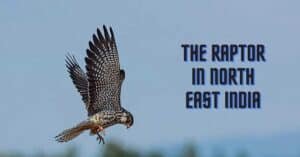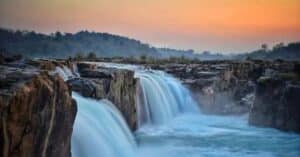The Karbi Tribe is one of the most distinguished tribes of Assam and North East India. The Karbi tribe is also known as the Mikir tribe in various govt. documents and ancient literature. Though the tribe mainly inhabits Karbi Anglong and Dima Hasao district of Assam, various districts of Assam such as NC Hills, Kamrup, Nagaon, Sonitpur, and Morigaon has a sizeable number of Karbi people. Racially, the Karbi tribe is of Mongoloid origin- a part of the Tibeto-Burmese group. The festivals of Karbi tribe features characteristics of both Mongoloid and Austric race. This synthetic feature of their festivals has been preserved by the tribe. Here is the list of important festivals of Karbi tribe of Assam:
Chomangkan Festival of Karbi Tribe

- Photo credit: Instagram @dhillonramanips
This festival is a mirror to karbi folk culture, its rich music, colourful attire and hospitable nature of the tribe. Karbi tradition of religion, societal bonding is preserved through this festival. Generally, this festival is organised for the salvation of a deceased person and for the blessing of closed relatives of the deceased person. The tradition has it that this festival has to be organised according to prescribed guidelines. The guidelines are known as ‘Kan-Fla-Fla’, ‘Langtuk’ and ‘Harone’. Among the three guidelines, only one is followed.
On the very first day of the festival, known as ‘Rupkehum’, mortal remains of the deceased persons are reserved from the pyre. The second day is called ‘Kanas’ and the third day is called ‘Kanpi’ . On these days, dance and music are organised to bid adieu to the departed soul. On the fourth day, ‘Banzar Ketu’ , mortal remains are cremated by lighting fire on the funeral altar.
The ‘Chomankan’ festival is held to offer a festive ending to the souls of the deceased Therefore, various artistic items such as ‘Jambili Athan’ are brought from distant villages to the venue of the festival. There are many different types of dances, songs and food. However, it is noticeable that the tone of sadness is played amidst the joy as it is a tribute ceremony. The festival also features spiritual obscene songs and dances.
In Chomankan, young men and women perform a circular dance to the tune of ‘Chengburup'(drums), ‘Muritongpo(pipes)’, etc. The dance is performed with the shield ‘chang’ and sword ‘nak’ in hand. It is noteworthy that during the dance, a young man in the middle of the circle holds an attractive ‘Jambili Athan’ The young men and women start the “Mimsokirung” dance together. They perform several types of dances in this dance. These include ‘Mimsokirung’, ‘Banjar-Kekan’, ‘ ‘Kengtirkekan’, ‘Riso Mar Kachihing’, etc. It should be noted that when young men and women dance in pairs, they should not belong to the same clan.
Rongker or Wofong Rongker

- Photo Credits: Facebook- Angtong Engti Kathar
At the beginning of the year, the villagers celebrate the ‘Ranker’ Puja in a festive atmosphere.The villagers gather to celebrate the festival during the agricultural work. This. In this festival, the villagers wish for rain, good crops, and removal of all kinds of evils. There are two main types of festivals. (1) ‘Pirda Rongker’ and (2) ‘Ajo Rongker’. During the day, the festival ‘Pirda Rongker’ is celebrated quite a distance from the village. Only men can attend this Puja festival. It is also forbidden to bring home meat dishes taken as offerings during the Puja. The ‘Ajo Rongker’ is performed at night.
Another prominent form of ‘Rongker’ festival is ‘Bofong Rongker’ also spelled as Wofong Rongker. This festival is celebrated collectively after every five years among the people of one or two villages as well as the people of a block. The festival is celebrated for two days. The first day of the festival is a mass puja and the second day is the Lakshmi Puja- ‘Lakhikekur’ Puja.The priest recites the mantra and explains its meaning to the devotees. After the festival, the offering of the prayer is distributed among the household. The offering is mainly a rice plant sapling which is called ‘Minu’ and it is considered very auspicious for the upcoming paddy cultivation.
Sok-keroi Festival

- Photo credit: Ministry of Tourism
The Karbi community celebrates Sok-keroi to celebrate the harvest. After being busy with threshing and bringing the rice home, the villagers helped the householders. When the tired people have their free time from the harvest, everyone enjoys dancing and singing. They also enjoy eating together in Sok-keroi . They devote themselves to dancing and singing at night on the day of the festival. The festival commemorates a social reformer named ‘Irukasen’ by singing songs. Songs are sung in praise of the owner of wealth, Lakshmi Kaplang. This was followed by the performance of the songs ‘Kantir Kekan’ and ‘Hachakekan’.
Chojun Festival of Karbi Tribe

- Photo credit: http://tung-ehpo-mangal.blogspot.com/
‘Chojun’ or Swarak Puja, is the biggest festival of the Karbi people. The four or five-yearly festival is celebrated to worship their gods Indra ‘wofong’, Rudra ‘arpi’ and Agni ‘Birnee’. In this festival, pigs should be offered on the altar of worship and made into a ditch. Preparations should be made to organize Puja in the year they grow up. This puja should be performed at three times. The number of pigs sacrificed is also increased from one to three or four according to the order. All the relatives of the host are invited to the puja. The festival is celebrated for three days and creates a festive atmosphere with food, worship and other ceremonies.
Karbi Youth Festival

- Photo credit: Karbi Youth Festival
Recognized as the North-Eastern India’s Largest Ethnic Festival, it features over 6000 cultural activists on 4 stages during its annual 5-day run in mid February. The festival features national and regional musical entertainment, more then 1 million visitors, over 2000 exhibitors, food vendors, stalls & exhibition, fun shopping and much more! The festival started in the year 1974 at Diphu Karbi Club. Initially it was small festival. But within a few years it became a major incident in Karbi Anglong as well as in Northeast and looking back one finds the Karbi Youth Festival has not only become an annual event which the entire Karbi Anglong looks forward to, but also a forum to determine and redefine Karbi Art and Culture from a new and progressive viewpoint.
The Karbi Tribe have been holding a festival of cultural harmony through this programme. This program has affected all aspects of their national life. It has also had a significant impact on education, literature, arts, culture, traditional games, dances, music, food, dress, etc. It is also noteworthy that such festivals contributes to the peace, harmony and overall development of the region.
Read this blog to know more about Karbi Youth Festival
Most of the festivals of the Karbi tribe is agriculture based, which means these festivals are celebrated during the sowing and harvesting season. Besides the above mentioned festivals, there are other festivals such as: Hasakekan (Festival of Goddess Laxmi and God Indra), Peng (A festival celebrated at the start of any agricultural activity), Rit-nong-sing-di (a harvest festival), Hemphu etc.







